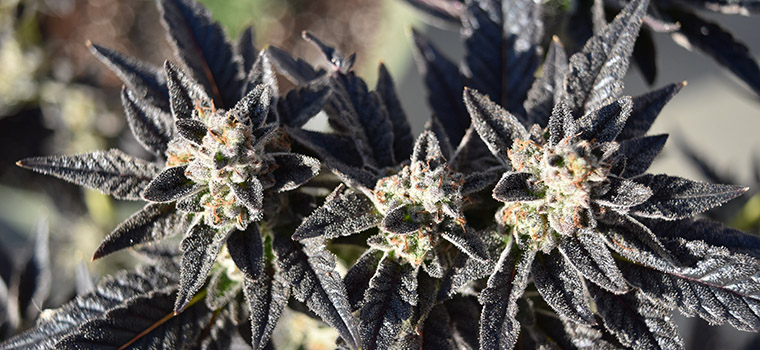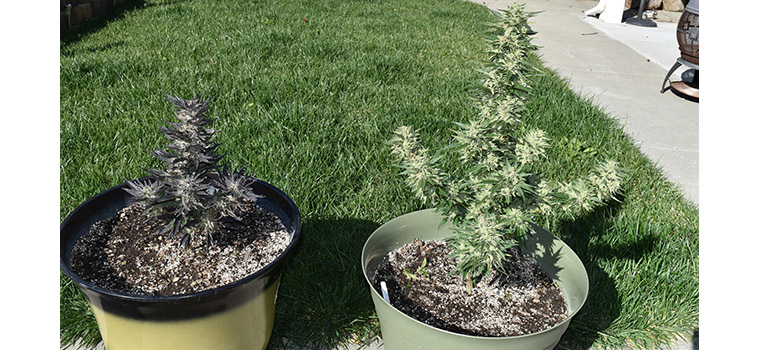It all began in 1972 with Proposition 19, the California Marijuana Initiative, which was the first time a statewide ballot measure appeared that attempted to legalize marijuana in the United States.

BY JOEL WILLIAMS
Published: January, 2018
It all began in 1972 with Proposition 19, the California Marijuana Initiative, which was the first time a statewide ballot measure appeared that attempted to legalize marijuana in the United States. It failed to pass and received 33.5 percent voter support, which its grassroots organizers saw as a victory of sorts. In fact, the initiative received 51.6 percent support in San Francisco County and a whopping 71.25 percent in Berkeley.
The rest of the nation did not necessarily agree with Bay Area voters. President Nixon signed the Controlled Substances Act into law in 1970, classifying marijuana as an illegal controlled substance and giving it a Schedule I classification. This classification for drugs is considered the most dangerous, possessing a high risk of addiction with virtually no evidence of medical benefits, the same classification as heroin. In 1971, Nixon declared a “war on drugs” and stated that drug abuse was “public enemy number one.” He formed the Drug Enforcement Administration (DEA) in 1973 to eradicate drug use and smuggling in the United States.
Throughout all of this anti-drug fervor, still a full third of California voters saw marijuana (also called cannabis) as something that should not be against the law for discerning adults. As a matter of fact, in the mid-1970s, other parts of the country began to soften their stance on the legality of marijuana, with 11 states choosing to decriminalize possession of small amounts of cannabis.
In 1976, President Jimmy Carter even ran on a political campaign to decriminalize marijuana. In 1977, the Senate Judiciary Committee voted to decriminalize up to one ounce of cannabis. Then President Reagan was elected in 1980, which swung the pendulum in the other direction and expanded many of Nixon’s policies.
In 1996, California voters approved Proposition 215, also called the California Compassionate Use Act, which made California the first state to legalize medical cannabis. Several other states followed—Alaska, Oregon and Washington followed suit in 1998.
Then, in 2012, Colorado and Washington became the first states to legalize the sales and possession of cannabis for recreational use. California, Massachusetts, Maine and Nevada all passed measures in 2016 legalizing recreational marijuana. California’s Proposition 64 allows adults 21 and older to possess up to one ounce of marijuana and grow up to six plants in their homes.
Currently, 29 states and the District of Columbia have laws that legalize cannabis in some form. Seven states and the District of Columbia have laws that legalize marijuana for recreational use.
On December 14, the State of California’s Bureau of Cannabis Control began issuing the first group of commercial cannabis licenses for retailers effective January 1, 2018. Under the new rules set by the California Bureau of Cannabis Control, cannabis products will be tracked from seed to sale and be subject to strict product testing. Some of the other regulations include:
• Any business selling cannabis products must be located at least 600 feet from a school.
• All stores must have 24-hour security surveillance and close by 10 p.m.
• Edible cannabis products must contain no more than 100 milligrams of THC (the active component responsible for the mind-altering effects) per package and be clearly divided into 10 milligram servings.
• Edible cannabis product packaging cannot resemble traditionally available food packages.
• Edible cannabis product packaging should not be attractive to children and the label may not refer to the product as a candy, it must be resealable if the product includes multiple servings, and it must be child-resistant.
• Edible products cannot be shaped like a human, animal, insect or fruit.
One complication of California’s new law is that marijuana is still illegal under federal law. Maybe that explains why, when I reached out to several current medical dispensaries in Vallejo, no one would comment on the record or allow me to take photos inside their locations. One location even took exception to me taking a photo of the storefront exterior, with the owner of the company blocking me from getting in my car until I deleted all of the photos.
Matt Shotwell, star of Discovery Channel’s Weed Country series and self-proclaimed “ganjapreneur,” knows this legal concern all too well. He was arrested by federal agents along with state and local police in 2012 for operating the Greenwell Medical Dispensary in Vallejo. All charges were subsequently dropped, but the event left him in significant debt and dominated his life for over a year.
“A lot of people have been waiting a long time for this and many have been irreparably harmed by years of useless enforcement, myself included,” Shotwell told Bay Crossings.
Each city will be able to choose whether to allow the sale of legal cannabis by either issuing or denying permits. There will be state licenses available for retail, cultivating, distributing and testing. Each establishment must have a local permit to receive a state license.
“Some cities are issuing a full suite of licenses. These are jobs, property rentals, commercial property sales and tax revenue. The cities that issue the most permits will draw in the most investment money,” Shotwell said. “I hope all the cities and towns in California, including Vallejo, make the smart decision to take this opportunity from the new state law to let all their citizens take part in the green rush.”
“A local permit is needed to have a state permit and they should offer every kind of permit locally,” Shotwell continued. “Some cities will still ban all activities and limit opportunities for involvement in the green rush. Those cities will regret that decision.”

Proposition 64, passed in 2016, allows adults to possess up to an ounce of marijuana and grow up to six plants at home.

California was the first state to legalize medical marijuana with a doctor’s recommendation in 1996.

